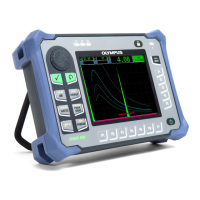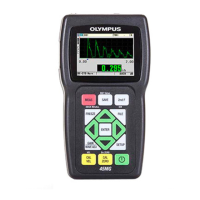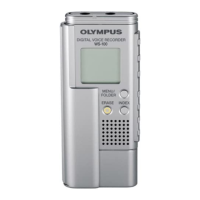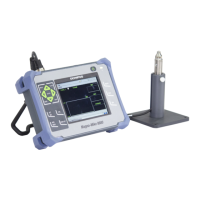DMTA-10055-01EN, Rev. A, February 2015
Software Features and Options
247
To add transfer correction to a completed DGS/AVG curve
Choose DGS/AVG > Delta VT to adjust the value of the transfer correction.
When adjusting transfer correction, the curve height should remain constant, but
the echo height changes.
11.3.4 DGS/AVG Curve Gain
The overall gain level of the entire DGS/AVG curve can be adjusted higher or lower
from the reference gain. Most inspection codes do not permit reflectors to be sized
below 20 % FSH. Therefore, to inspect beyond a certain depth/sound path time within
a part, it is necessary to raise the gain of both the live A-scan and the DGS/AVG curve
to continue the inspection. This is accomplished on the EPOCH 650 using DGS/AVG
curve-adjustment gain.
To adjust the DGS/AVG curve gain
1. Press dB.
2. Adjust the curve gain in either coarse or fine increments.
The curve-gain difference is added/subtracted from the instrument base
(reference) gain.
DGS/AVG curve gain adjustment are applied to both the echo height and curve
height to maintain the amplitude ratio and therefore, the sizing comparisons.
Figure 11-17 on page 248 shows a DGS/AVG setup with curve-gain in use to provide
accurate echo-amplitude measurement by placing the echo close to 80 % FSH.

